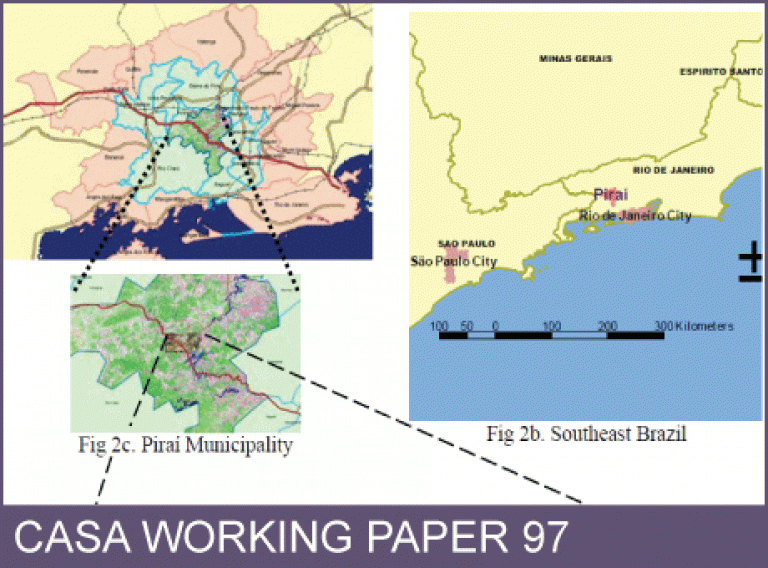CASA Working Paper 97

1 August 2005
Enhancing urban analysis through lacunarity multiscale measurement
Urban spatial configurations in most part of the developing countries show particular urban forms associated with the more informal urban development of these areas. Latin American cities are prime examples of this sort, but investigation of these urban forms using up to date computational and analytical techniques are still scarce.
The purpose of this paper is to examine and extend the methodology of multiscale analysis for urban spatial patterns evaluation. We explain and explore the use of Lacunarity based measurements to follow a line of research that might make more use of new satellite imagery information in urban planning contexts. A set of binary classifications is performed at different thresholds on selected neighbourhoods of a small Brazilian town. The classifications are appraised and lacunarity measurements are compared in face of the different geographic referenced information for the same neighbourhood areas. It was found that even with the simple image classification procedure, an important amount of spatial configuration characteristics could be extracted with the analytical procedure that, in turn, may be used in planning and other urban studies purposes.
This working paper is available as a PDF. The file size is 1032KB.
Authors: Sinesio Alves Junior, Mauro Barros Filho
Publication Date: 1/8/2005
 Close
Close

